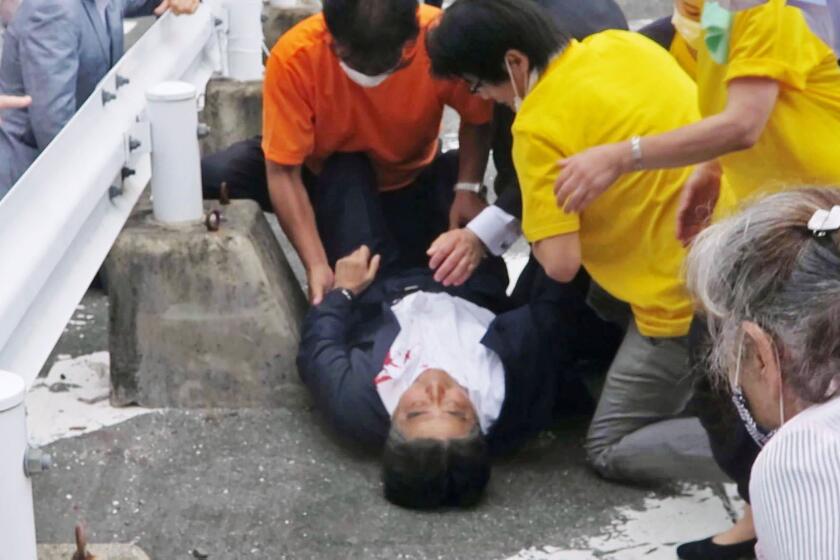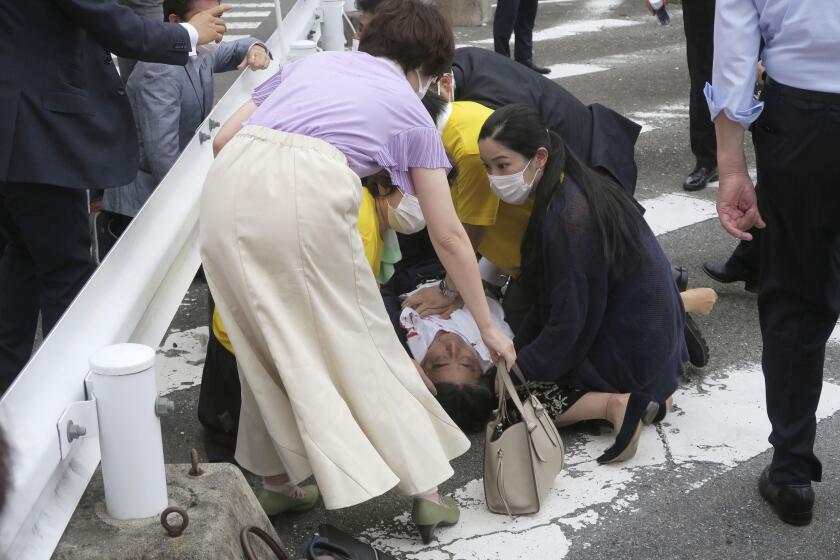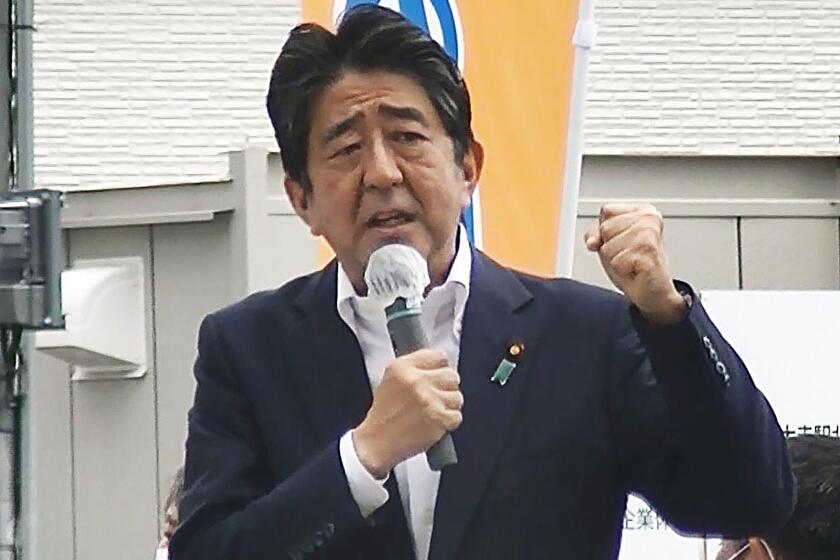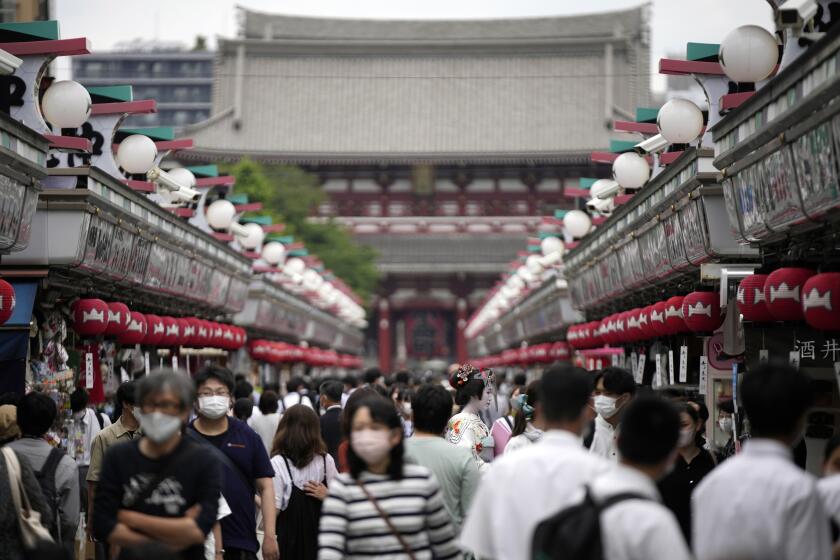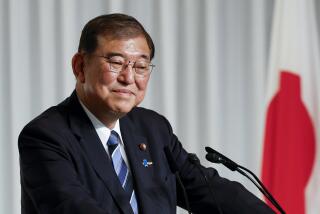Shinzo Abe, Japan’s longest-serving leader, leaves a polarizing legacy
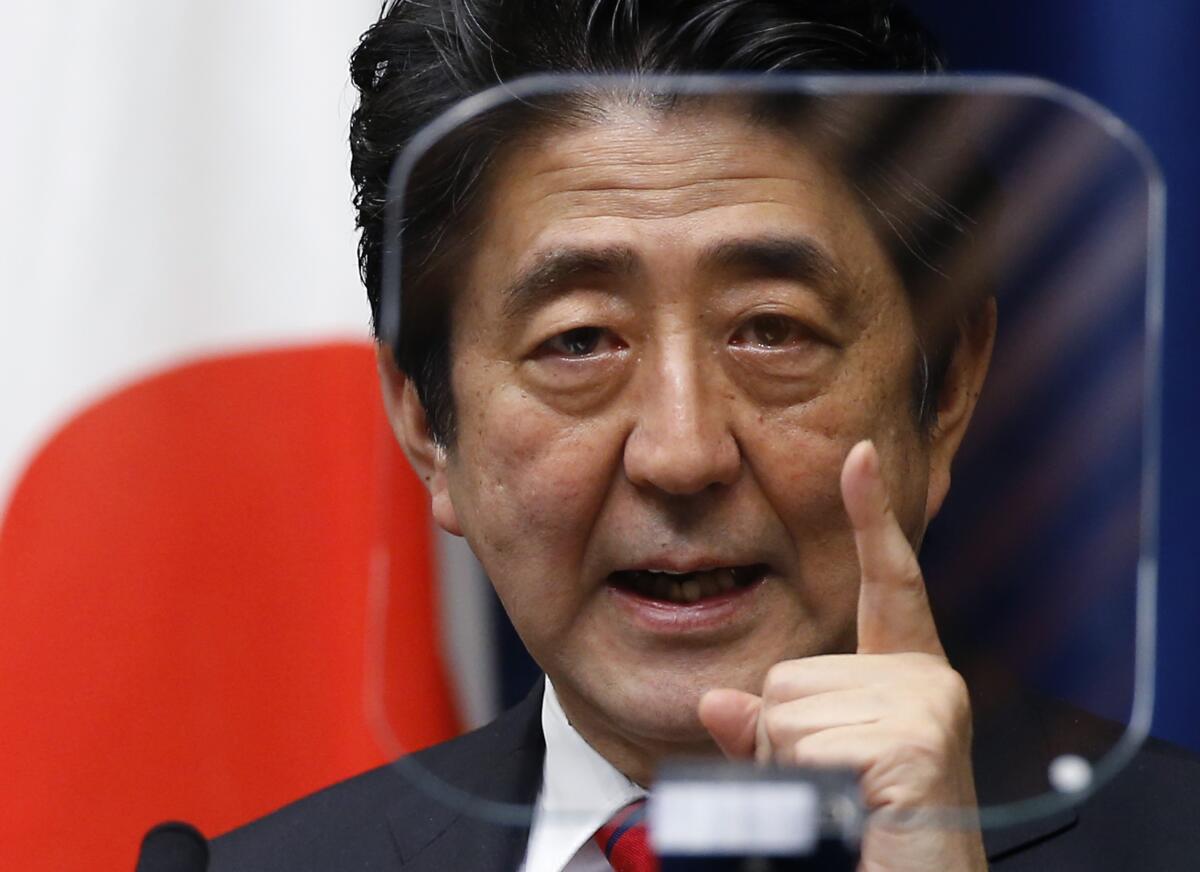
- Share via
TOKYO — Shinzo Abe was a political blueblood groomed for power. Japan’s longest-serving prime minister, he was also perhaps the most polarizing, complex politician in recent Japanese history.
Abe, who was assassinated Friday, angered both liberals at home and World War II victims in Asia with his hawkish push to revamp the military and his revisionist view that Japan was given an unfair verdict by history for its brutal past.
At the same time, he revitalized Japan’s economy, led efforts for the nation to take a stronger role in Asia and served as a rare beacon of political stability before stepping down two years ago for health reasons.
Former Japanese Prime Minister Shinzo Abe was assassinated Friday on a street in western Japan by a gunman who shot him from behind as he delivered a campaign speech — an attack that stunned a nation with some of the world’s strictest gun-control laws.
“He’s the most towering political figure in Japan over the past couple of decades,” said Dave Leheny, a political scientist at Waseda University. “He wanted Japan to be respected on the global stage in the way that he felt was deserved. ... He also wanted Japan to not have to keep apologizing for World War II.”
Abe, who died after being shot during a campaign speech, was 67.
Police arrested the suspect at the scene of the attack, which shocked many in Japan, one of the world’s safest nations with some of the strictest gun-control laws. Near the suspect was a double-barreled device that appeared to be a handmade gun.
Former Japanese Prime Minister Shinzo Abe was fatally shot during a campaign speech in the western city of Nara. A suspect has been arrested.
Abe believed that Japan’s postwar track record of economic success, peace and global cooperation was something that “other countries should pay more attention to and that Japanese should be proud of,” Leheny said.
Abe was a darling of conservatives but reviled by many liberals in Japan. And no policy was more divisive than his cherished, ultimately unsuccessful dream to revise Japan’s war-renouncing constitution. His ultra-nationalism also angered the Koreas and China, both wartime victims of Japan.
That push for constitutional revision stemmed from his personal history. Abe’s grandfather, former Prime Minister Nobusuke Kishi, despised the U.S.-drafted constitution, adopted during the American postwar occupation. For Abe, too, the 1947 charter was symbolic of what he saw as the unfair legacy of Japan’s war defeat and an imposition of the victors’ world order and Western values.
That constitution renounces the use of force in international conflicts, and limits Japan’s military to self-defense, although the country has a well-equipped modern army, navy and air force that work closely with the United States, Japan’s top ally.
Born into a prominent political family, Shinzo Abe, who was shot at a campaign event, holds the record as Japan’s longest-serving prime minister.
Poor public support for the changes doomed Abe’s push, but the goal still enjoys backing from his ultra-conservative supporters.
Abe bristled at postwar treaties and the tribunal that judged Japanese war criminals. His political rhetoric often focused on making Japan a “normal” and “beautiful” nation with a stronger military and bigger role in international affairs.
He also was a driving force for Japanese conservatives’ efforts to whitewash wartime atrocities and push for an end of apologies over atrocities.
Supporters point to his efforts to raise Japan’s profile on the international stage, and his proposal for a new order of like-minded democracies as a counter to China’s rise, something Washington and others soon endorsed.
Breaking News
Get breaking news, investigations, analysis and more signature journalism from the Los Angeles Times in your inbox.
You may occasionally receive promotional content from the Los Angeles Times.
Abe was also a big influence on current Prime Minister Fumio Kishida’s policies, pushing for the bolstering of military capability, including a preemptive-strike capability.
Abe stepped down as prime minister in 2020 because he said the ulcerative colitis he’d had since he was a teenager resurfaced.
He told reporters at the time that it was “gut-wrenching” to leave many of his goals unachieved. In addition to the failure on constitutional revision, he was also unable to settle several other unfinished legacies of the war, including normalizing ties with North Korea, settling island disputes with neighbors and signing a peace treaty with Russia formally ending their hostilities in World War II.
Abe was praised in Washington for his push for a stronger U.S.-Japan relationship, which he saw as a means of bolstering Japan’s defense capability. Japan hosts 50,000 U.S. troops as a bulwark in the region amid tensions with China and North Korea.
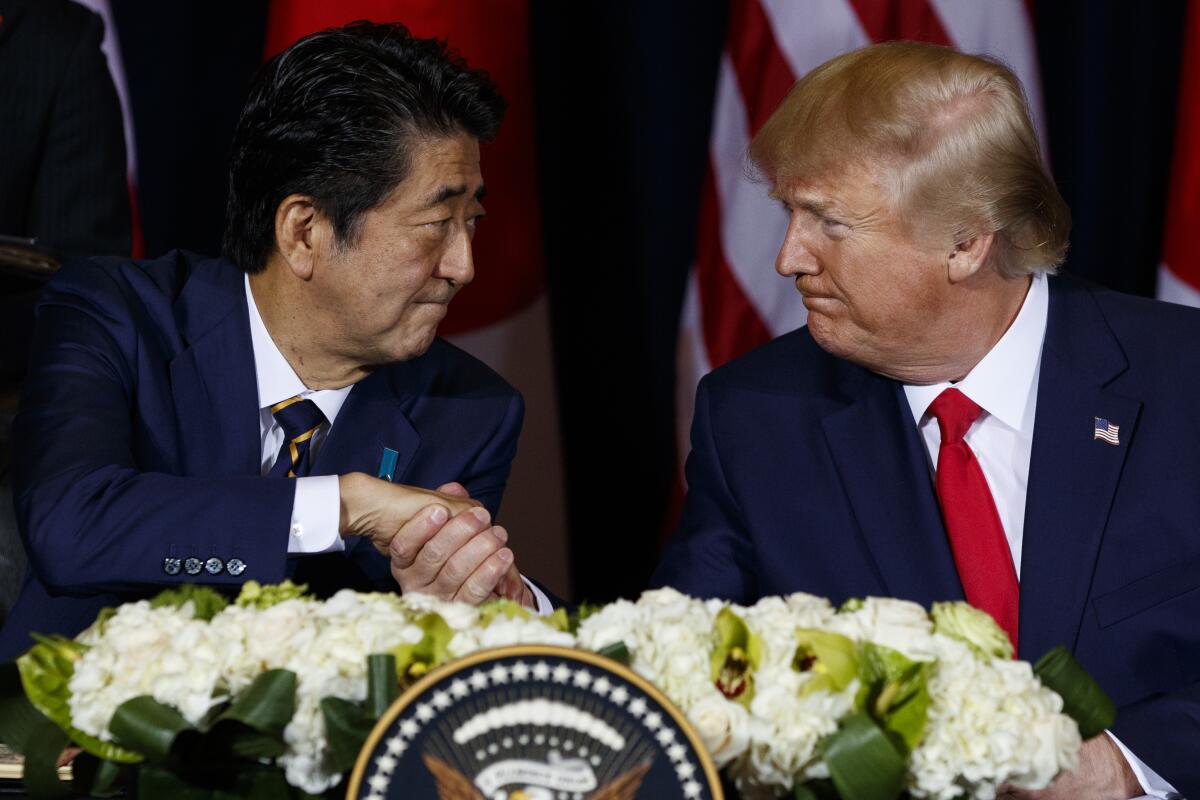
Abe charmed conservatives with his security policies because of fears of terrorism, North Korea’s missile and nuclear ambitions and China’s military assertiveness.
But there has always been general public support for the pacifist constitution and divided views on amendments within Abe’s governing party. Many lawmakers preferred to focus on economic growth.
Abe said he was proud of working for a stronger Japan-U.S. security alliance and shepherding the first visit by a serving U.S. president to the nuclear-bombed city of Hiroshima. He also helped Tokyo gain the right to host the 2020 Olympics by pledging that a disaster at the Fukushima nuclear plant was “under control” when it was not.
Abe became Japan’s youngest prime minister in 2006, at age 52, but his overly nationalistic first stint abruptly ended a year later, also because of his health.
Japan partially reopens to foreign visitors and begins accepting visa applications after two years of near-dormant tourism because of the pandemic.
The end of that scandal-ridden term was the beginning of six years of annual Japanese leadership change, remembered as an era of “revolving door” politics that lacked stability and long-term policies.
When he returned to office in 2012, Abe vowed to revitalize the nation and get its economy out of its deflationary doldrums with his “Abenomics” formula, which combined fiscal stimulus, monetary easing and structural reforms.
He won six national elections and built a rock-solid grip on power, bolstering Japan’s defense role and its security alliance with the U.S. He also stepped up patriotic education at schools and raised Japan’s international profile.
Abe left office as Japan’s longest-serving prime minister by consecutive days in office, eclipsing the record of Eisaku Sato, his great-uncle, who served 2,798 days from 1964-72.
More to Read
Sign up for Essential California
The most important California stories and recommendations in your inbox every morning.
You may occasionally receive promotional content from the Los Angeles Times.
